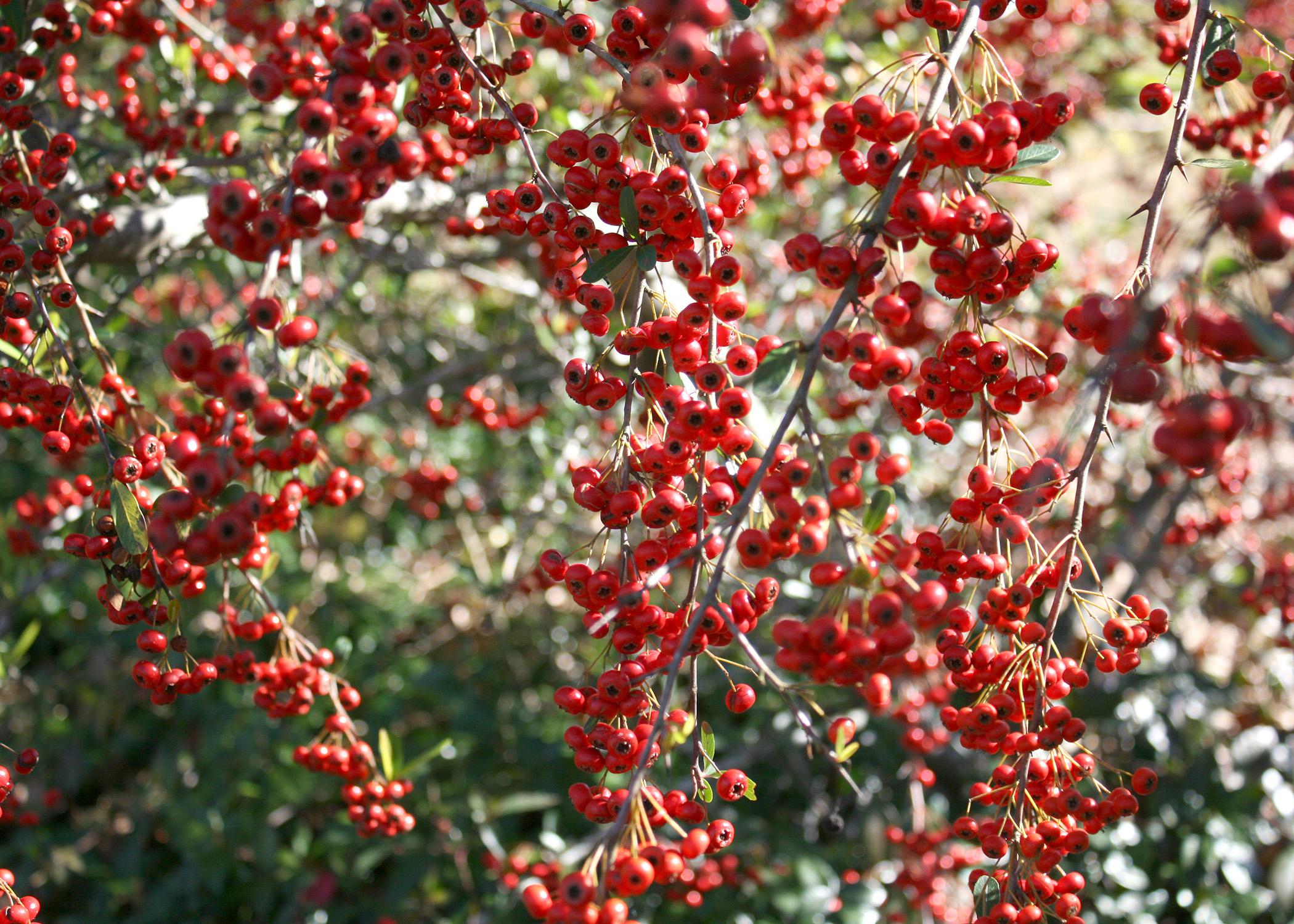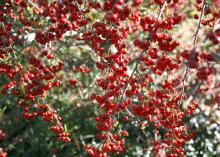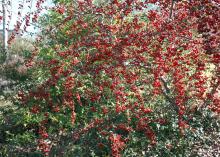Information Possibly Outdated
The information presented on this page was originally released on January 7, 2013. It may not be outdated, but please search our site for more current information. If you plan to quote or reference this information in a publication, please check with the Extension specialist or author before proceeding.
Pyracantha brings color to winter-dreary scenes
Color in the landscape can seem like an unachievable goal in the cold and dreary winter months. But it can be reached when gardeners rely on plants with features other than flowers to brighten the areas around homes.
Pyracantha is one of the best choices the home gardener can make for the winter landscape. This plant’s colorful berries can add beauty and interest to any winter setting.
Pyracantha is a medium-large landscape shrub that is semievergreen in mild winters. It is versatile, with many landscape uses. Left unpruned, pyracantha has a casual habit and can reach up to 10 feet tall and wide. It has abundant clusters of white flowers in the spring.
Fruit clusters are prominent from the late fall all the way through winter to spring. The arching, branching habit is accentuated by the production of these red-orange berries toward the ends. The heavy fruit clusters seem to drip off the branches.
You can bring stems with fruit clusters inside and display them in a vase for a winter decoration.
Perhaps pyracantha’s most popular landscape use is as an espalier specimen, which is a plant trained to grow in one plane. Pyracantha readily accepts being trained to grow flat across a trellis. Such a specimen can enhance a blank wall or fence.
The botanical name for pyracantha literally means firethorn, which is its common name. It certainly lives up to this name with sharp and painful thorns on almost all of the branches. The thorny nature of Pyracantha makes it the perfect shrub to plant underneath and around windows. No burglar would want to tangle with one of these shrubs.
Pyracantha is a fast-growing shrub suitable all across Mississippi. The best fruit production is from plants in full sun. Fruit production and growth rate are reduced when the plant is grown in the shade.
This plant can adapt to almost any soil condition and type, as long as the soil is well drained. Be careful not to plant too deep; do this by keeping the top of the root ball even with or slightly above grade. A little handful of fertilizer will get your new plant off to a good start. In subsequent years, fertilization is not required.
As with most landscape shrubs, Pyracantha appreciates a 2- to 3-inch layer of mulch to help it conserve soil moisture in dry spells.
Pyracantha is not native to North America but came instead from China and Taiwan. It is related to the apple tree. After doing a little research, I found that the berries are edible and make a nice jelly. A word of caution is required: fresh fruit can cause some gastric distress and must be cooked first.
Pyracantha adds beauty to our Mississippi winter landscapes, and the berries also play an important role as a winter food source for birds and other wildlife. Be sure to include this dual-purpose shrub in your personal landscape.









